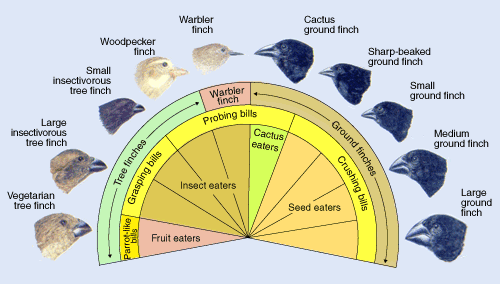
CALL US: 123-456-7890

Galapagos
Evolution/Adaption
Now, one of the main reasons the Galapagos is so important, evolution! It was first discovered in part by Charles Darwin. The Galapagos was the main reason way evolution could be proven. It is incredible that that the first plants and animals managed settling there. They had no dirt, mates or food. But over time the land softened, the first plants and animals left their nutrients, and made it easier for the next generation to root in the lava. The birds came on storms, penguins and seals on currents, lizards on vegetation, and the turtles floated on their backs of vegetation as well. Darwin (see Charles Darwin) interested in Darwin's finches. There are 13 different species and they are all perfectly adapted to their islands. Some eat seeds, some fruit, and some insects. They helped prove his theory of natural selection, but at first he just found them intriguing. To summarize his theory, he found there were certain traits that a species prefered. Then evolution is genetic mutation that happens naturally. Your genes change, in result of what trait is most beneficial to species based on their environment, and is a fluke of nature. For example Polar bears evolved from brown bears when a white one was born. Their adaptive advantage of being white allowed them to blend in with the snow, so were more likely to live. Likewise, certain genes that you don’t need disappear usually. For example scientists say that we may lose our pinkie toes since we wear shoes, which helps with balance. The animals with these genetic advantages find food easier, and can pass on their advantaged genes. The animals the most adapted to their habitat have the highest likelihood to survive. Galapagos has so many of those fine tuned animals because it is small, and smaller population are more rapidly affected, enabling them to evolve quickly. That also made it immensely valuable to scientists to research evolution. Now, the land iguanas. They are yellow and eat cactus, and their thorns. They were having trouble not eating the thorns, so they evolved to be able to eat them. Here is a diagram.
Now, what I think may be the most amazing evolution, the Marine Iguana. They diverged from the land iguanas around 8 million years ago. They started eating the seaweed to be able to find food in the Galapagos while it was active, and covered with lava. Their snouts shortened, they became better swimmers, and much more (see Reptiles). They lived in parts of the volcano now submerged. There lighter faces are due to salt buildup from when they expelled it out there nose, or their cranial exocrine glands to be specific. They have claws for climbing, big flat tails for swimming, and compact (viewed next to its cousin, the Land Iguana) forelimbs for diving. They do not use their limbs when swimming too much. Unfortunately, they are not evolved against, new, introduced species. That is why we need to stop introducing invasive species, and that concludes Evolution/Adaption.
